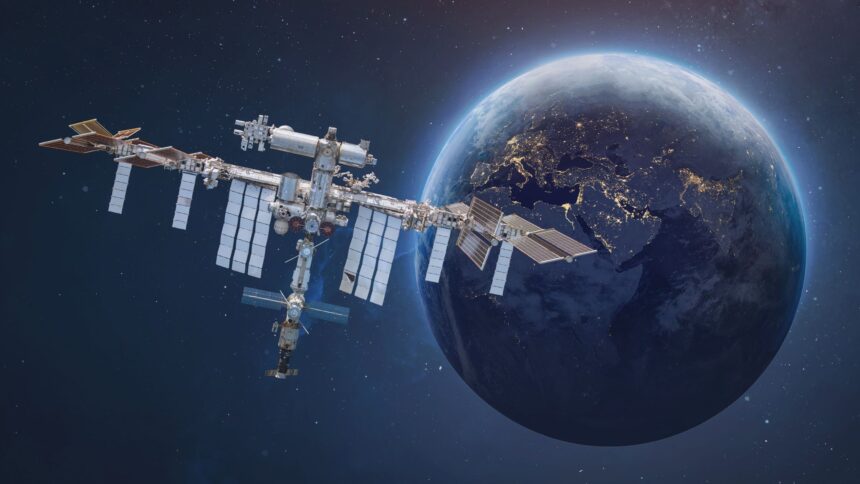On Wednesday (June 26) there was a turn of events, as nine astronauts on the International Space Station (ISS) had to temporarily move to their docked return spacecraft because a satellite, in low Earth orbit unexpectedly broke apart.
The Incident Unfolds
NASA recently provided an update, on X (previously referred to as Twitter) mentioning that the Expedition 71 team promptly relocated to their three spacecraft, including the Boeing Starliner after 9 p.m. EDT (0200 GMT). This precautionary step was taken while the astronauts were asleep underscoring the surprise element of the situation. NASA authorities verified that the crew stayed in their spacecraft for an hour before receiving approval to go back, to the station and resume activities soon after.
The Source of the Debris
NASA did not mention the satellite involved. A satellite monitoring company called LeoLabs identified an incident that created debris linked to the inactive Russian spacecraft Resurs P1 (SATNO 39186). The U.S. Space Command confirmed that, than 100 detectable fragments were produced as a result of this event. Despite this the military did not perceive any dangers. Continues its regular evaluations of close approaches between objects in space.
Launched on June 25 2013 Resurs P1 remained operational until December 2021 surpassing its expected lifespan. This satellite was used for a variety of purposes such, as defense activities, emergency monitoring and agricultural applications.
Growing Concerns Over Space Debris
The growing amount of space junk poses a worry, for space organizations globally. NORAD, the North American Aerospace Defense Command currently keeps tabs on than 45,300 objects in space not including the fragments. Moreover, the Union of Concerned Scientists reports that there are 7,560 satellites orbiting Earth highlighting the crowded conditions in space.
To reduce risks NASA works together with the U.S. Military to monitor the area surrounding the ISS. If detectable debris larger than 2 inches (5 centimeters) is predicted to enter an area shaped like a “pizza box” around its orbit the stations position is adjusted accordingly. This box spans 2.5 by 30 by 30 miles (4 by 50 by 50 kilometers) with the ISS, at its center.
In cases where a dangerous piece of debris threatens safety astronauts can seek refuge in their return spacecraft—an action observed previously in November 2021 when Russia conducted a satellite test by destroying a satellite.
Implications for the Boeing Starliner
The recent event highlights the significance of the Boeing Starliner spacecraft in its 10 day Crew Flight Test mission which has now extended to, over three weeks. The Starliner is equipped for emergencies. Stands ready to leave the ISS if required. However its planned departure date is on hold due to issues with its thruster systems and helium supply that came to light in June.
NASA astronauts Butch Wilmore and Suni Williams who’re on board the Starliner have been busy with maintenance tasks, on the ISS while awaiting guidance. The scheduled departure of the Starliner originally slated for after July 2 depends on the results of a spacewalk and a recent coolant leak that disrupted operations.
Looking Ahead
Boeing and NASA have acknowledged that missions, like Starliner which’re still in development can often experience delays. However CEO Tory Bruno of United Launch Alliance (ULA) has given updates that provide reassurance mentioning that the crew on the Starliner is safe and that any helium leaks on the spacecraft are under control thanks, to a reserve of helium onboard. Bruno has stressed that there is no need for the crew to return and has mentioned that the International Space Station (ISS) is well equipped with supplies.
Both NASA and Boeing are dedicated to ensuring the safety of the astronauts and the success of the Starliner mission. Through evaluations and necessary adjustments the astronauts will head home once all their tasks are finished and all systems are confirmed to be operating safely.
Affiliate Link Suggestions
If you’re someone whos captivated by the mysteries of space and eager to delve check out these captivating items;
- Books and Documentaries, on Space; Immerse yourself in the realm of space travel with works like “An Astronaut’s Guide to Life on Earth” penned by Chris Hadfield.
- Model Kits of Space Stations; Construct your International Space Station using the LEGO NASA Apollo Saturn V set.
- Educational STEM Toys; Spark the imagination of learners with gadgets like the National Geographic Rocket Launcher ideal for aspiring space explorers.
- Clothing Inspired by Space; Display your passion for all things with NASA themed T shirts.
By exploring these offerings, you can contribute to the quest for knowledge about space while indulging your curiosity and enthusiasm, for the universe.


